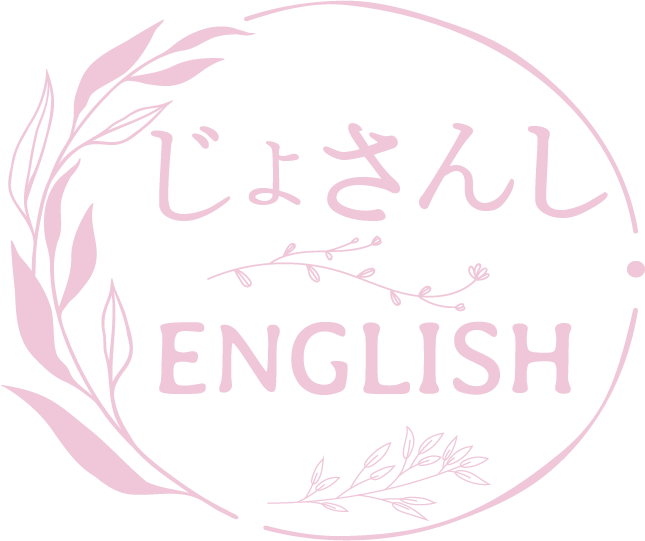今回は、英語対応の産婦さんが無痛分娩・和痛分娩をするとき、やさしい英語でサポートするフレーズをご紹介します。
まずは、「無痛分娩」「和痛分娩」言葉の定義から。
どちらも麻酔を使って分娩時の痛みを和らげる出産方法で、二つの用語に明確な違いはないとされています。
施設によっては、鎮痛方法や薬剤の種類などによって区別するところもあるようです。
ここでは、「硬膜外麻酔を用いて痛みを緩和させながら行う分娩」=無痛分娩とします。
日本産科麻酔学会 JSOAPによると、日本の硬膜外無痛分娩率は2007年に2.6%、2016年に6.1%。2016年にアメリカでは63.2%、フランスでは82.2%。比較すると、日本の無痛分娩率は圧倒的に低い割合といえますが、取り入れる施設が少しずつ増えてきていることも事実です。
この記事では、シンプルでやさしい英語を使って、無痛分娩の利点・起こりうる問題点・事前説明のフレーズをご紹介します。
医師がきちんと説明し、産婦さんの同意をいただいた上で処置を行うことが一般的ですが、産婦さんがいかに不安の少ない状態で分娩に臨めるかは、わたしたち助産師の声かけや説明、気持ちに寄り添う姿勢がとても大切です。
それではみてみましょう!
無痛分娩の利点 Advantages of an epidural
・いちばんの利点は、痛みが軽くなることです。
The biggest advantage is to relieve the pain.
(メリットは和製英語。利点=advantage アドヴァンテージ)
・それにより、緊張やストレスを軽減させることができます。
Therefore, you can be less nervous and stressed.
(緊張=nervous ナーヴァス)
・それにより、お産の経過を冷静に感じることができます。
Therefore, you can feel your progress of the birth calmly.
(冷静な=形容詞calm、冷静に・落ち着いて=副詞calmly)
・骨盤周囲の筋肉の緊張がとれ、産道が広がりやすくなります。
The muscle around the pelvis can be relaxed, so the birth canal can dilate well.
(産道=the birth canal、広がる=dilate)
・体力の消耗が少なく、産後の回復を助けます。
You can save your energy, so you can recover smoothly.
起こりうる問題 Possible problems with your epidural
・麻酔による副作用(低血圧、発熱、皮膚のかゆみなど)が出る可能性があります。
There is a possibility of having some side effects of the anesthesia such as low blood pressure, fever, itching etc.
(〇〇の可能性がある=there is a possibility of 〇〇、副作用=side effects)
・合併症の可能性があります(麻酔薬が血管内や脊髄くも膜下腔に入る、硬膜外穿刺後頭痛など)。
There is a possibility of having some complications.
(For example, anesthesia gets into the vein or spinal subarachnoid space, post-dural puncture headache, etc. )
(合併症=complications カッコ内は専門的な説明なので、産婦さんの質問や理解度に応じて説明内容を変えると良い。)
・分娩時間が長引くことがあります。
The epidural may slow down your labor.
・それにより、陣痛促進剤が必要になるかもしれません。
Because of that, you might need labor induction.
(labor induction=陣痛促進剤)
・吸引・鉗子分娩が多くなる傾向があります。
The rate of vacuum and forceps tend to increase.
※帝王切開率は上がりません。
The rate of C-section will not increase.
事前説明
・麻酔を使っている間、食べることはできません。
During the anesthesia, you are not allowed to eat.
(麻酔=anesthesia アネステイジア)
・飲み物はいつでも摂っていただけます。
You can drink anytime.
・背中からの硬膜外麻酔の前に、点滴をします。
We will give you an IV drip before the epidural.
(点滴=IV drip アイヴィードリップ)
・麻酔を使うことで血圧が下がってしまうかもしれないので、そのためです。
Your blood pressure might get low by using anesthesia, so the IV can help it.
・麻酔科医が硬膜外麻酔を入れます。
Anesthesiologist will give you the epidural.
(麻酔科医=anesthesiologist。anesthetistでもOKだが、これには訓練を受けた看護師など麻酔科医以外も含まれる。)
・横向きの姿勢で横になり、背中から硬膜外麻酔を入れます。
You will lie down on your side, then have the epidural anesthesia from your back.
・細い針で局所麻酔をした後、柔らかい管(カテーテル)を入れます。
After the local anesthesia, you will have the soft catheter.
(局所麻酔=local anesthesia、管=catheter カテター)
・カテーテルをテープで固定します。
We will secure the catheter tube with tape.
(secure=固定する、確実なものにする、というニュアンス)
・通常、約20分で処置は終了します。
It usually takes 20minutes to set up.
・効くまでに20分くらいかかります。
It takes 20minutes to work.
・時々、十分に効かないことがあります。
Sometimes you don’t have enough effect.
(効果=effect)
・その場合、管の位置を調節したり入れ替えたりすることがあります。
In that case, the doctor need to adjust or take the catheter out and put it in again.
(調節=adjust)
・処置の間やその後、定期的に血圧を測らせてください。
During and after this process, we will check your blood pressure regularly.
(定期的に=regularly)
・体温が上がることがあるので、定期的に測らせてください。
You might have fever, so we will take your temperature regularly.
・麻酔を入れる少し前から赤ちゃんが産まれるまで、赤ちゃんの心音と陣痛がわかるモニターを継続します。
Before putting the catheter in until the birth, we will continue monitoring your baby’s heart beat and your contractions.
・陣痛の具合によって、陣痛促進剤を使うことがあります。
Depending on the contractions, you might need a labor induction.
(〇〇によって=depending on 〇〇)
・脚が動かしにくくなるので、ベッドの上で過ごしていただきます。
You might not be able to move your legs freely, so you will need to stay on the bed.
・ベッド上で横を向いたり座ったり、体勢は変えられます。
You can change your posture like turning on your side or sitting on the bed.
(体勢=posture)
・トイレに歩けないので、お小水は管でとらせていただきます(導尿)。
You can’t walk to the bathroom, so we will drain your urine with the a catheter.
(トイレ=bathroom、restroom 排出させる=drain)
・分娩の進み具合や痛みの具合をみながら、使用する麻酔の量を調節しましょう。
Let’s adjust the amount of the anesthesia by watching your progress of the birth and the pain.
・そのつど説明しますので、大丈夫ですよ。
We will explain everything to you each time, so don’t worry.
・痛みが強い時は、いつでも教えてください。
When you have lots of pain, please always let me know.
まとめ
いかがでしたか?
シンプルでやさしい英語を使った、無痛分娩の利点・起こりうる問題点・事前説明のフレーズをご紹介しました。
日本語・英語間で一語一句全く同じ言葉で訳することは難しいのですが、シンプルな単語で正しいニュアンスが伝わるよう作成しました。
硬膜外麻酔を使った無痛分娩の介助、実践編はこちら↓↓
今回は、・無痛分娩の観察項目を英語で理解する・英語で硬膜外麻酔挿入介助ができるこの2つをゴールにして、英語対応の産婦さんが無痛分娩をするとき、やさしい英語でサポートする方法をご紹介します。施設によって「和痛分娩」としている所[…]
この記事が、少しでもみなさんのお役に立てればうれしいです。
最後まで読んでいただき、ありがとうございました。
参考
一般社団法人 日本産科麻酔学会 「無痛分娩Q &A」 https://www.jsoap.com/general/painless
Labour Pains.com, FAQs Pain Relief https://www.labourpains.com/FAQ_Pain_Relief
▼LINE公式 お友達特典 『助産師さんの 魔法の英語フレーズ3選』
動画をプレゼント中!

